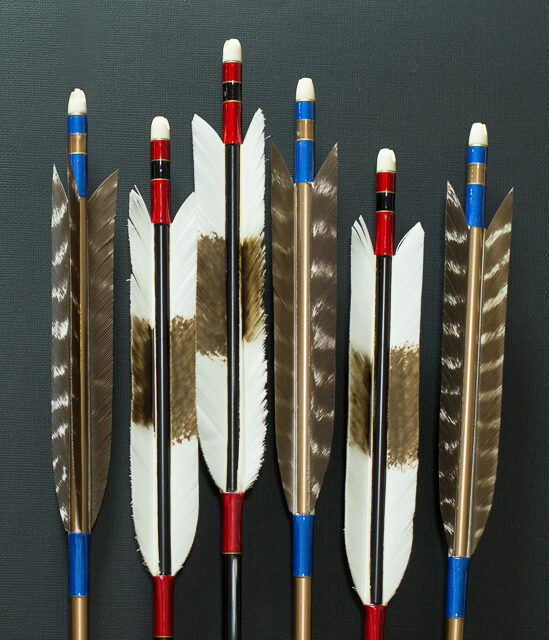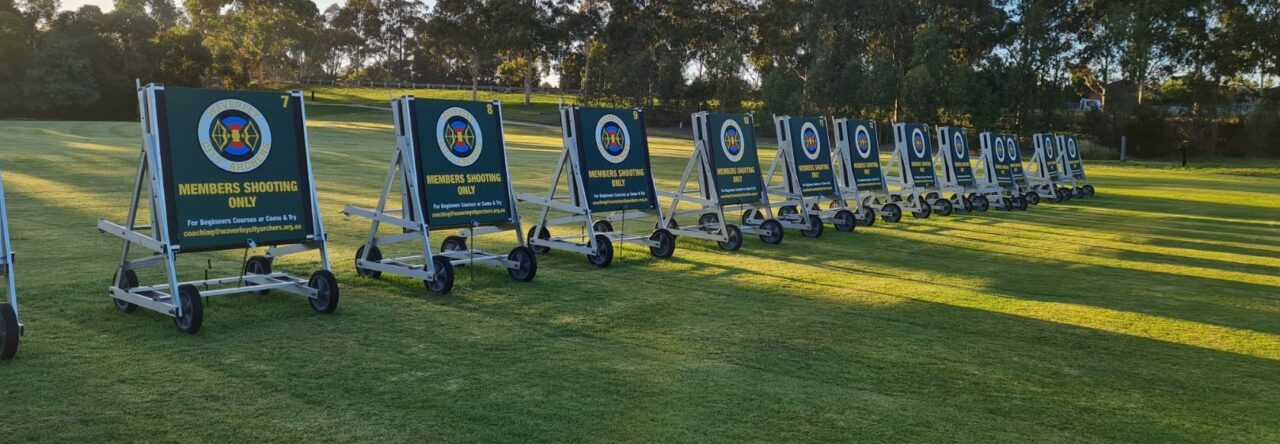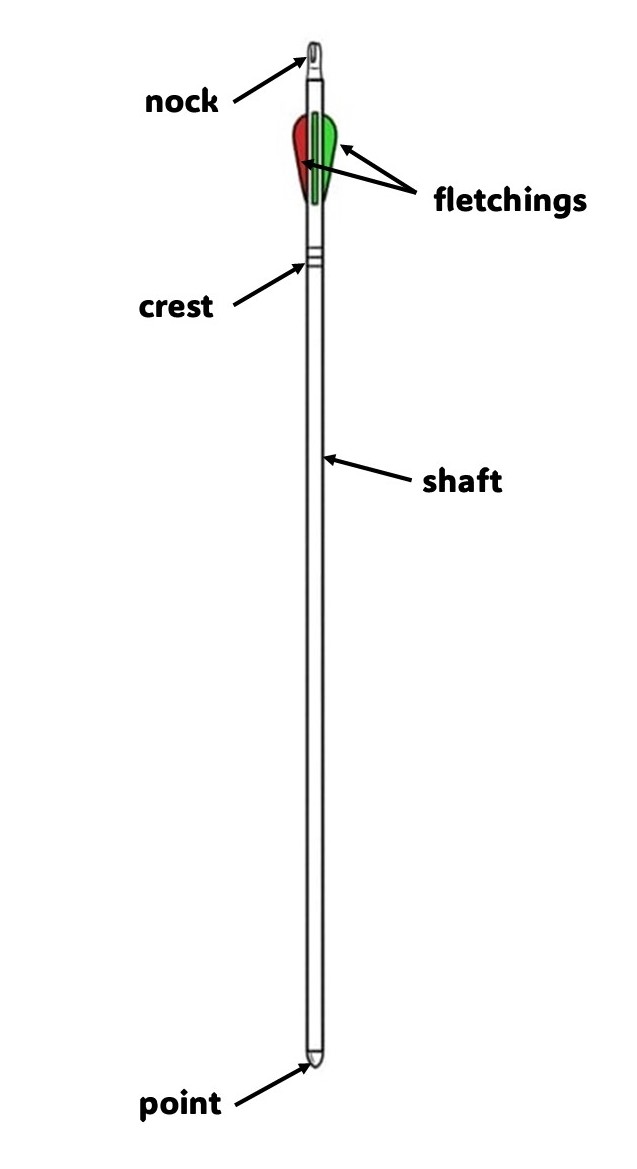There are five main components to an archery arrow:
The SHAFT, or body of the arrow, which is hollow. The thickness and strength of the shaft material determines the stiffness of the arrow’s spine.
A metal POINT or arrowhead at the front of the arrow enables it to pierce the target.
A U-shaped groove or NOCK is attached to the back of the arrow and grips or clips on to the bowstring.
The FLETCHINGS, or vanes, aid in stabilising the arrow and are usually made of lightweight plastic, but can be made of feathers in more traditional bow types.
The CREST is a mark or unique design on the shaft of the arrow displaying the manufacturer, the model number and the measurements of that particular arrow.
Arrow Illustration by Jessica Emmett – Notations by Kristina Cook.

Arrows shot from a Recurve Bow usually bend horizontally, while arrows shot from a Compound Bow usually bend vertically.
Modern arrows are constructed of aluminium, carbon fibre or a composite of materials. Ancient arrows were built from wood, bamboo or other natural materials.
In Kyudo, or Japanese archery, the arrows, or Ya, are traditionally made from bamboo, while modern Ya are made from aluminium or carbon fibre. The Ya are fletched with feathers, known as Hane, and are 15cm in length.

Photo by Kristina Cook & Steve ‘Viking’ Oxley.
© 2023 Waverley City Archers Inc.

